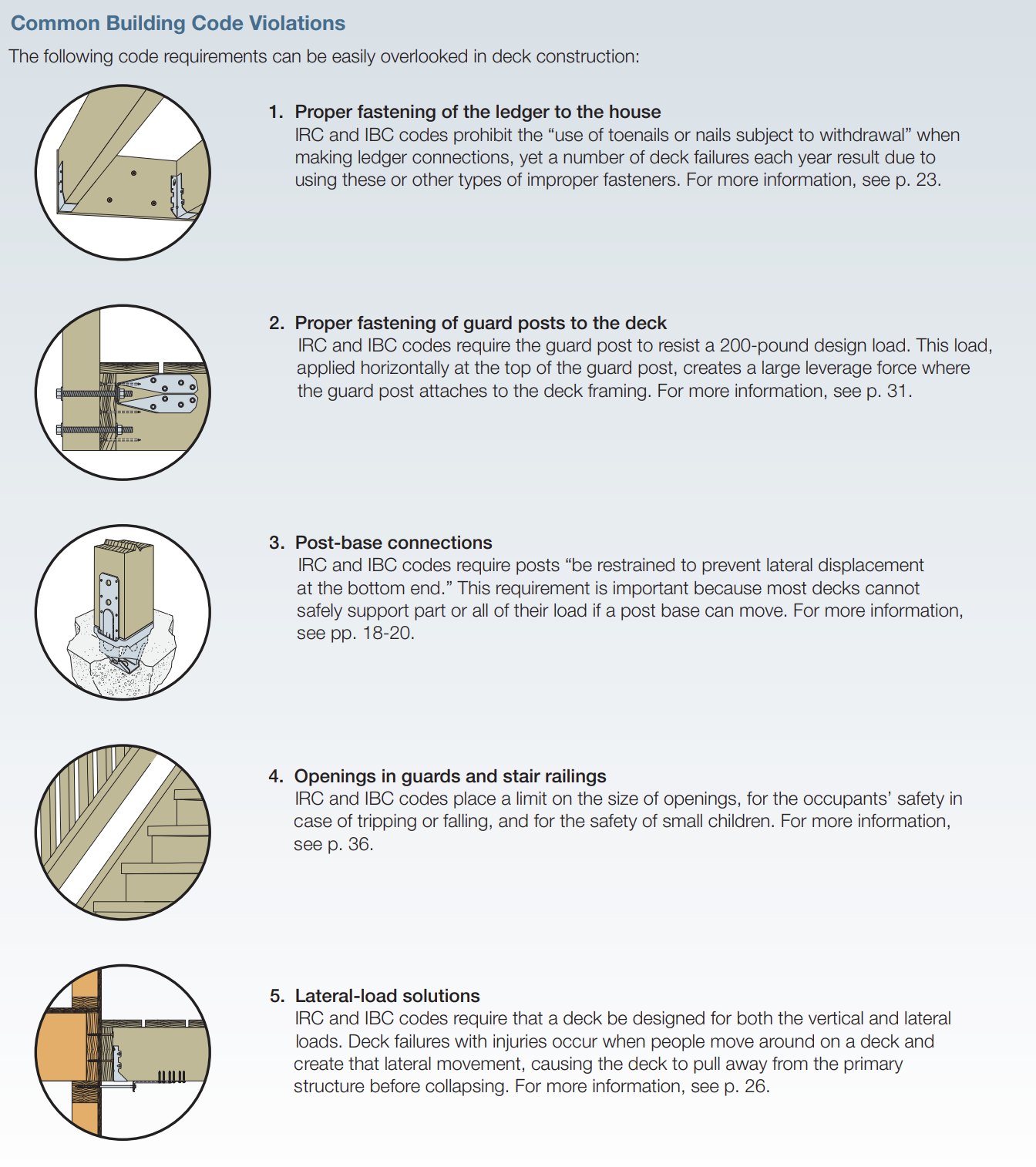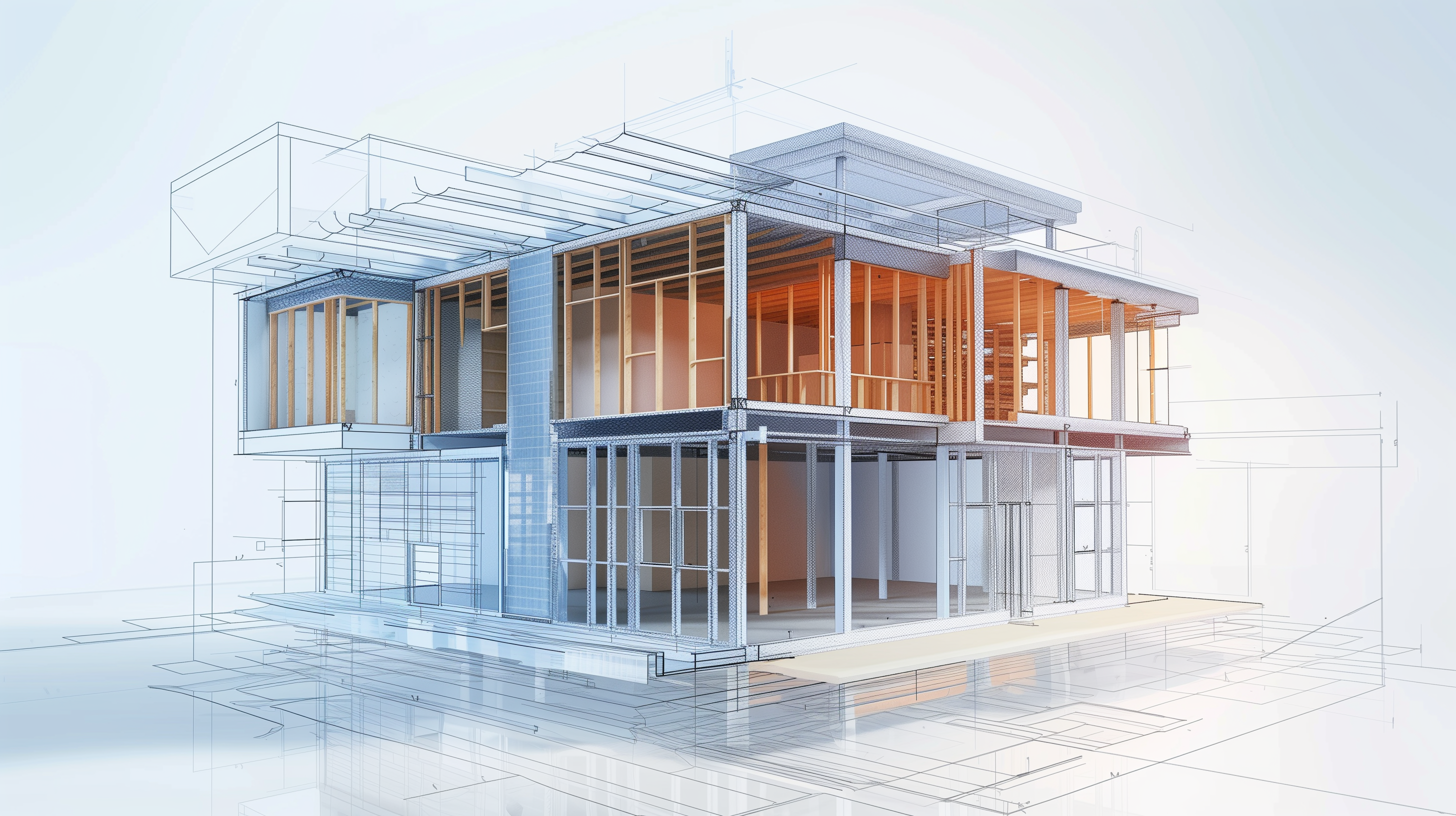Building a deck can seem straightforward, but adhering to building codes is essential for safety and durability. Decks, like any other structures, need to meet specific standards to support weight and resist various loads. This article will explain why decks must comply with building codes, outline common violations, and provide guidance for constructing a safe deck.
Why Decks Need to Meet Building Code Requirements
Importance of Building Codes
Building codes ensure that structures, including decks, are safe and capable of withstanding various forces. The 2018 and 2021 International Building Code (IBC) and International Residential Code (IRC) highlight the importance of meeting design requirements, particularly the concept of a continuous load path. This means that every component of the deck must effectively transfer loads from their origin to the foundation.
IRC Section R301.1 states:
“The construction of buildings and structures in accordance with the provisions of this code shall result in a system that provides a complete load path that meets the requirements for the transfer of loads from their point of origin through the load-resisting elements to the foundation.”
Continuous Load Path
A continuous load path is crucial for deck safety, ensuring that vertical, lateral, and uplift loads are properly transferred. Decks must support the weight of people and objects, as well as resist forces from wind, seismic activity, and occupant movement.
Deck-Specific Requirements
Starting with the 2015 edition, the IRC has included a section dedicated to safe deck construction. These requirements have evolved with each edition, emphasizing the importance of following code guidelines for every deck, regardless of size or height. While some smaller, low-to-the-ground decks may be exempt from building permit requirements, they must still meet basic code standards.
Common Building Code Violations
Even with the guidelines in place, some common building code violations occur during deck construction. Addressing these can prevent failures and ensure safety.
1. Proper Fastening of the Ledger to the House
Issue: Using toenails or nails subject to withdrawal for ledger connections.
Code Requirement: IRC and IBC codes prohibit such fasteners due to the risk of deck failures.
2. Proper Fastening of Guard Posts to the Deck
Issue: Guard posts not resisting the required 200-pound design load.
Code Requirement: Guard posts must withstand horizontal loads, preventing leverage forces from compromising the deck framing.
3. Post-Base Connections
Issue: Post bases not restrained, allowing lateral displacement.
Code Requirement: Posts must be secured to prevent movement, ensuring the deck can support its load.
4. Openings in Guards and Stair Railings
Issue: Openings too large, posing tripping or falling hazards.
Code Requirement: Codes limit opening sizes to protect occupants and small children.
5. Lateral-Load Solutions
Issue: Decks not designed for lateral loads, leading to failures when subjected to lateral movement.
Code Requirement: Decks must resist both vertical and lateral loads, preventing them from pulling away from the primary structure.
Conclusion
Meeting building code requirements is essential for constructing a safe and durable deck. By understanding the importance of these codes and addressing common violations, you can ensure your deck provides a secure and enjoyable outdoor space.
For immediate service or consultation, you may contact us at Allied Emergency Services, INC.
Contact Information:
- Phone: 1-800-792-0212
- Email: Info@AlliedEmergencyServices.com
- Location: Serving Illinois, Wisconsin, and Indiana with a focus on the greater Chicago area.
If you require immediate assistance or have specific questions, our human support is readily available to help you.
Disclaimer: This article is intended for informational purposes only. For professional advice, consult experts in the field.










